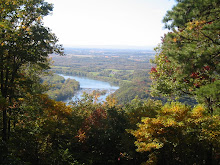I had a hard time choosing the most “successful" poem because I felt that a lot of these poems were successful. But if I had to choose, I would say that the two that stood out to me most were James Wright’s “A Blessing” and St.Germain’s “Why I Went into the Jungle.” In “A Blessing,” Wright appeals to me because of his simple language. Although he creates more complex, beautiful images like “bow shyly as wet swans” or “delicate as the skin over a girl’s wrist” he maintains accessibility throughout the poem. I was pulled in because an event takes place. Wright describes the narrator and a friend walking into a pasture, an action that leads us to the ponies. Here he reveals an intimate moment with one of them, allowing the reader to take this journey with him. This buildup allows the reader to believe and feel the epiphanic moment the narrator has at the end: “Suddenly I realize / That if I stepped out of my body I would break / Into blossom.” Similarly, I felt St. Germain succeeds with simple language. Yet her language is strengthened by the mood or tone she sets. The poem is an answer to a “Why” question and I think that appeals to any reader…everyone wants to know why. This poem lured me in because of its cadence, as well. By strategically breaking lines, she creates a rhythm that when read out loud reflects an inner emotional discovery the narrator feels in the jungle. Whether the reader has been in the jungle or not, she takes one there through intense emotion.
I find it very difficult to know a poet’s true intention when sitting down to write a poem. However, it is by recognizing their approaches that I can begin to understand what they are, at least, trying to do:
For Pattiann Rogers, it seems her approach is to set up a hypothetical. She obtains this by using sensual imagery that is full of a lot of energy and passion.
Wright’s approach is simpler. He tells of an action that the narrator takes, a simple yet meditative action that in the end, reveals some epiphany or revelation.
Merwin’s approach seems more old fashioned, reminding me of Wordsworth or Shelly. He uses repetition to reveal the act of logging everyday, and the mundane physical labor. Although he never actually says “tree” it is through the concept of shadows that he reveals his point, an environmental one.
I appreciate Maurice Guevera’s more conversational tone. His approach stood out not only because his subject was different than the other selected poems, but he tells an emotional story in order to move the reader.
Lucille Clifton’s approach seemed the most experimental (or unique) to me. She empowers this poem by writing out her dialect. Although at first glance, the ideas or images seem common and easily overlooked, her language holds the weight of what she’s saying. Through her dialect she reveals her culture, past, and sense of place.
Galway Kinnel reminds me of Wright in how he approaches a poem: by telling an event or action that took place, bringing together the human and non-human world. For me, Kinnel empowers his poem through his imagery.
Laurie Kutchin’s poem “Walk in Tick Season" challenged my relationship with the non-human world most. Her approach of taking a simple and unpleasant creature such as tick and almost glorifying it to another level was impressive. I am someone who loves almost all creatures including spiders, snakes and insects. Or at least I am not bothered by some of the nastier ones. Yet I have no patience with ticks. They gross me out, freak me out, and the thought of them makes me itch all over. I make my husband take all the ticks off our dog after a hike in the woods because I don’t even want to touch them. I think that is why Kutchin intrigued me most. After reading this poem, I had a different view on ticks. I saw them as equal insects in the non-human world, “crawling as lightly as the morning breeze…carrying the grey-green blush of the sage.” I like how she genders this tick (maybe seeing it as a female affects my opinion) and connects her with me, the reader. She will fall from my skin after taking my blood, yet I feel happy to give it to her (though I think she most certainly will die) because I am then much more connected to her world… “her land pushed deeper into the blood of me.”
Sheryl St. Germain empowers and propels her poetry with emotions of longing, desire, and grief/pain. The rhythm of her poems seems extremely crucial in evoking the feeling at hand. For each poem, she focuses on one element of nature, whether it be a fish, a turkey vulture, a buck, or a tomato vine. Often, this element is taken to a deeper level through an intimate experience or interaction; this allows the narrator to reach a meaningful emotion. Her sensual language and strategic diction connects these non-human elements with the reader, a human who knows all emotions.
Subscribe to:
Post Comments (Atom)

Nature Poetry seems a poem in which nature plays an integral role, emphasizing terrain and life in a natural setting, season, metaphor. You symbolic nature poem used some aspect or element of nature as a symbol of the human condition.
ReplyDeletejeux ds